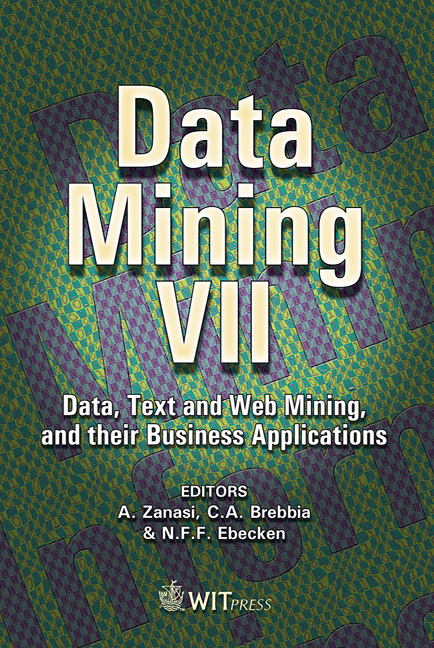Mining Cross-predicting Stochastic ARMA Time Series In SQL Server 2005
Price
Free (open access)
Volume
37
Pages
16
Published
2006
Size
427 kb
Paper DOI
10.2495/DATA060131
Copyright
WIT Press
Author(s)
B. Thiesson & J. Lind
Abstract
We present a prototype that we have developed for analyzing so-called stochastic ARMA models in SQL Server 2005, Analysis Services. The class of stochastic ARMA models extends the classic ARMA time-series models by replacing (or smoothing) the deterministic relationship between target and regressors in these models with a conditional Gaussian distribution having a small controllable variance. As this variance approaches zero, a stochastic ARMA model approaches a classic ARMA model. We represent a stochastic ARMA model as a directed graphical model. In doing so, we benefit from the ability to apply standard graphical-model-inference algorithms during parameter estimation (including estimation in the presence of time series with incomplete data), model selection, and prediction. The graphical model representation also offers a visual representation that is easy to interpretate. We demonstrate how the graphical representation in this way lends itself as a conceptually easy way of extending the models to handling cross predicting time series, periodicity, and trends. Keywords: time series, graphical models, ARMA, Bayes net, SQL server. 1 Introduction Graphical models have been used to represent time-series models for almost two decades (e.g., Dean and Kanazawa [1]; Cooper et al. [2]). The benefits of such representation include the ability to apply standard graphical-model-inference algorithms for parameter estimation (including estimation in the presence of missing data), for model selection, and for prediction. We introduce the most fundamental concepts for this class of models when needed in this paper. A gentle introduction and more details can be found in, for instance, Jensen [3].
Keywords
time series, graphical models, ARMA, Bayes net, SQL server.





